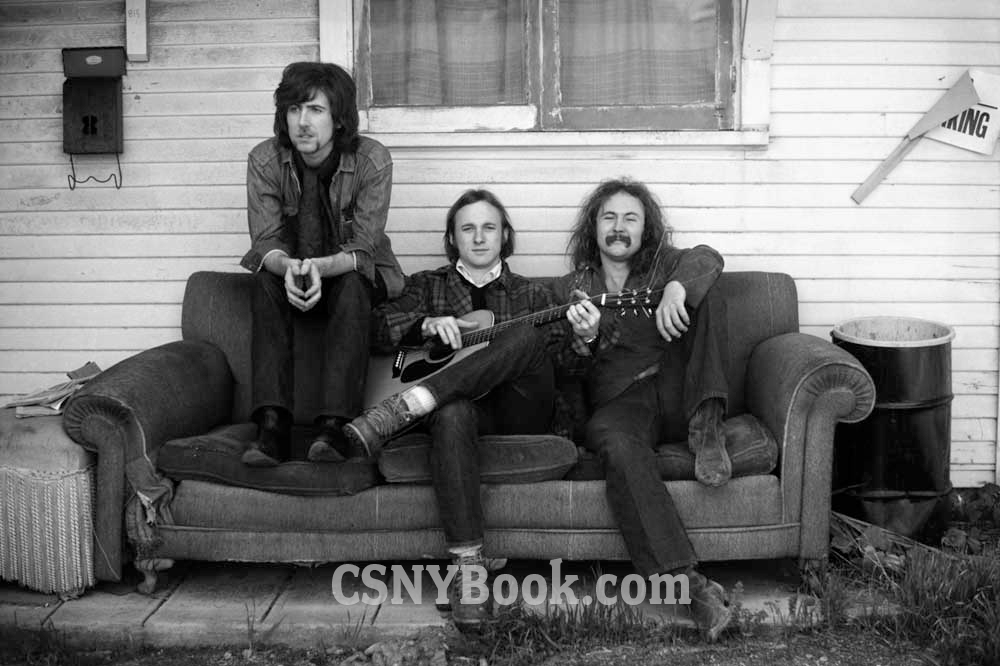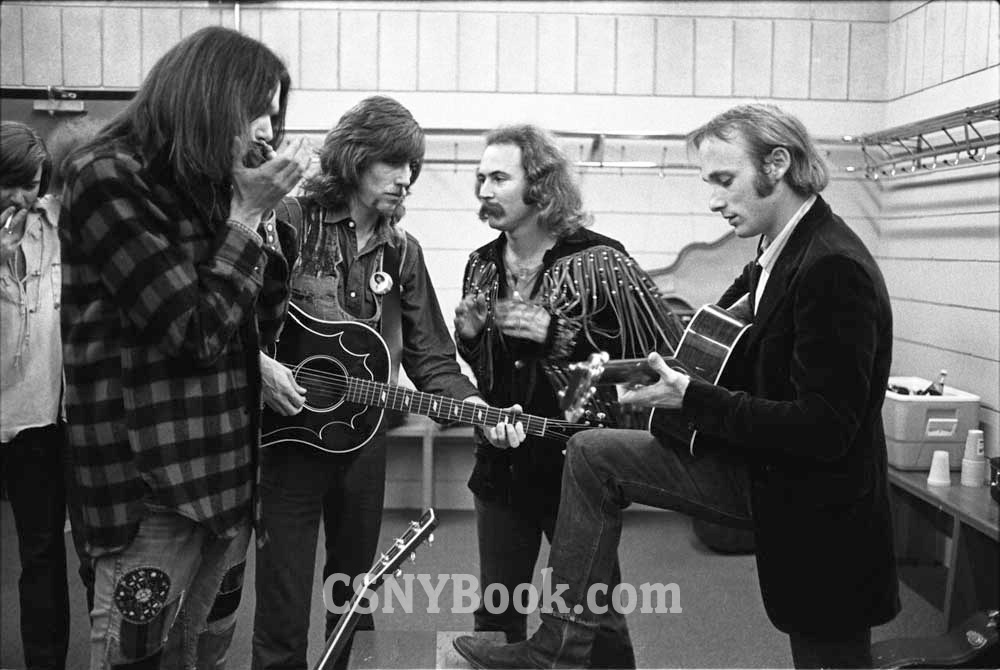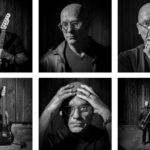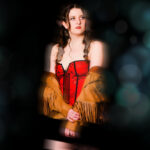
In the Laurel Canyon music scene, few left as indelible a mark as Crosby, Stills, Nash and Young. In an advance written feature to a forthcoming podcast Jason Barnard speaks with photographer Henry Diltz who captured the Laurel Canyon music scene and CSNY.
Your new book follows up another Genesis Publications book, ‘California Dreaming’. Out of any photographer of that time, your photos embody the Laurel Canyon scene and you were there at the heart of that living there. What was it that made Laurel Canyon special and why do you think the scene emerged in that area?
Laurel Canyon, it wasn’t a magical place. It was just a convenient place because it was right up the hill from Hollywood, from the sunset strip where all the clubs and record companies were just five minutes up the hill and you were in the countryside. And there were owls at night. You’d park your car late at night. You’d hear whoop, whoop, whoop, up in the tree. And there were coyotes and raccoons. You were in the country. And the reason it was up in Laurel Canyon, over the years, people had built little summer cabins up there on the hillside. But there were no proper houses with yards. There were no yards for children to play. There were no sidewalks. They were just curvy hills. If you go up to Laurel Canyon expecting to see something amazing, all you see are these curvy hills with cars parked on each side. Where’s the magic? The magic happened as single people lived up there, actors and musicians. We all just drifted up there because it was the most convenient place nearby to rent a little place. And so it was virtually almost all musicians and some actors living up there. And then every night we’d go down the hill to the Troubadour Club where we all got together almost every night. And I would see David Crosby in there, plenty. Almost every night. And he was a fan of ours. I remember one time we were playing there and in the dressing room he was saying, “Man, you’re so lucky. You get to sing harmony with your friends”. And I said, “Well, David, don’t worry. You’ll get there”. Kind of thing. Oh, man, it was funny. [laughs]
Given that you were friends with the band members, you were in that scene, you were there at the very start of Crosby, Stills and Nash’s formation. You’ve got some amazing shots of them in the studio in that early period. And as well in this book as well, you’ve got many of the people on the scene with quotes from them such as Judy Collins talking about ‘Judy Blue Eyes’. What was it like in that period? It must have been so exciting to see something special come together.
The late 60s. I photographed in 66, in 64, the Beatles played Ed Sullivan. That was kind of a turning point because all the folk groups wanted to see who these guys were. We’ve heard a lot about them. I’ve never really seen them before, I’ve heard a little bit on the radio, but I don’t get it, you know. We pulled into a motel that night on the road to watch the Ed Sullivan show. And our first reaction was, “oh, look, they have an electric bass.” We had a stand up bass, so we’d carry on the airlines and carry in the van with us. And it was big and bulky. And so by the next week, we had an electric bass, and we electrified all our instruments. And that’s why the Buffalo Springfield got together. They were folk musicians. Same thing with The Byrds. And we all were quite influenced by the Beatles. And the other thing was, in folk music, you never write a folk song. It’s a 100 year old song, right? But here were the Beatles singing, ‘She loves you, Yeah, yeah, yeah’. And I mean, we’re thinking, wow, why are we singing about the Ox Driver? We could be singing something more fun and lively, like they are. That’s when it affected everybody. All these musicians started writing their own music. It wasn’t only because of the Beatles. Bob Dylan in New York had written a Talking Blues for Woody Guthrie because he really liked Woody Guthrie. It was a renaissance and a flowering and a golden era of singer-songwriters. I’ve often said this, Frank Sinatra never wrote any songs. Elvis Presley never wrote any songs. There were songwriters and singers. But after the middle 60s, the singers were singing their own songs. So when you could see someone like Joni Mitchell sing her own feelings, what was in her heart and in her mind, which was considerable in her case. And in each of these cases, the cleverest singers would start writing their own feelings about life and love. And it was way more interesting to hear somebody’s, You take Jackson Browne, wow, what a guy. The words to his songs and then he sings them like anthems. They’re just so beautiful. It just makes it so much more amazing when a person sings their own story. And that’s what happened. And that was a big change, a sea change in the music industry.
There are a few shots in this book as well, going to Joni Mitchell’s house to take shots of Ladies of the Canyon as well. Again, a really natural pose. You really put her at ease.
By that time I was working with a graphic artist, Gary Burden, and he’s throughout that book. He was a great guy and I would take 500 pictures. He would look through them overnight and pick out the one that was going to be the cover. He was so good at it. And also he was fun to hang out with. He was a couple of years older than we were. He just was interesting. And a great personality. So that day we were just going to Joni’s house to take some publicity photos. And as we walked up the steps to her house, she was leaning out the window. And she said, “Hey, good morning guys. And we stopped to talk. And Gary talked to her for about five minutes right there in the window. And that gave me the chance to take these pictures. So not having gone to photo school myself. I didn’t learn lighting. I never shot in a studio. I wasn’t interested in that. In fact, for me, it was less about photography and more about hanging out with your friends and just being there to watch what happens, just having access. I’ve always been curious about people. When I was in college, before all this happened, I was studying psychology, not to be a psychologist, but to learn about people, how they act, why they act, who are we, what are we supposed to do, what are we doing?. And I’ve always been really, really curious about people. I found out more recently that my Chinese animal is a tiger. And tigers like to hide in the bushes and watch the other animals. And that’s exactly what I do. I remember in those days, people would see me with a camera and say, “Oh, you’re a photographer, are you a professional?” And I would say, “No, no, not really. I just take pictures of my friends”. I never really thought of myself as, okay, I’m here to take the picture. It was more like, hey, how are you doing? Then when I just sit and watch and when it’s interesting, I take the picture. I’m interested in documenting what really happens. I don’t want to make it happen, you know. Okay, you guys put on these funny hats and stand against that wall over there and look over here and smile, you know. That’s not my style. I just like to look and observe. And when it’s interesting and it frames up nicely, I push the button.
It’s interesting you talk about being a people watcher. So from a musical perspective, adding Neil Young to Crosby, Stills and Nash was quite an interesting combination and at times he would bring a bit more of a bite to the group, like with ‘Ohio’. But what was he like relating to the other three?
All the times I’ve ever been with Neil, it’s always very kind of up and happy. Usually he laughs a lot. I know he can be moody. He is a Scorpio. Scorpio is quite a strong astrological sign. Joni Mitchell is a Scorpio too. Generally, they know what they want, they don’t suffer fools lightly, and they either like it or they don’t like it. There’s no in between. And so he was very definite in what he wanted to do. He was funny, he really laughed a lot. I always have to say, all of us back then in the 60s were having a little toke of God’s herb, it was a way of life. Years later, we have a gallery called the Morrison Hotel Gallery where we sell all these pictures. And one day I was standing there, in the early days, it was only my pictures, 100 pictures on the wall. And a guy, walked in, he said, “Did you ever smoke grass with any of these people?” And I looked around the room and I said, “every single one, except for Donny Osmond, and maybe Michael Jackson.” His brothers probably smoked it, but he didn’t. It was left over from the jazz days. It wasn’t a big deal, but it was kind of a way of life. And the thing is, smoking a little bit of those flowers. It raises your attention, your interest in things. It accelerates your senses a little bit. And it heightens your senses, right? So you wanna reach for your guitar? It just makes the day a little bit brighter. By golly, it does, you know, when you get into the man-made powders, those are very bad.

Further information
CSN&Y: Love the One You’re With – Henry Diltz, Graham Nash, Stephen Stills and over 20 contributors
Full interview with Henry Diltz
All photos by Henry Diltz – used with permission.




